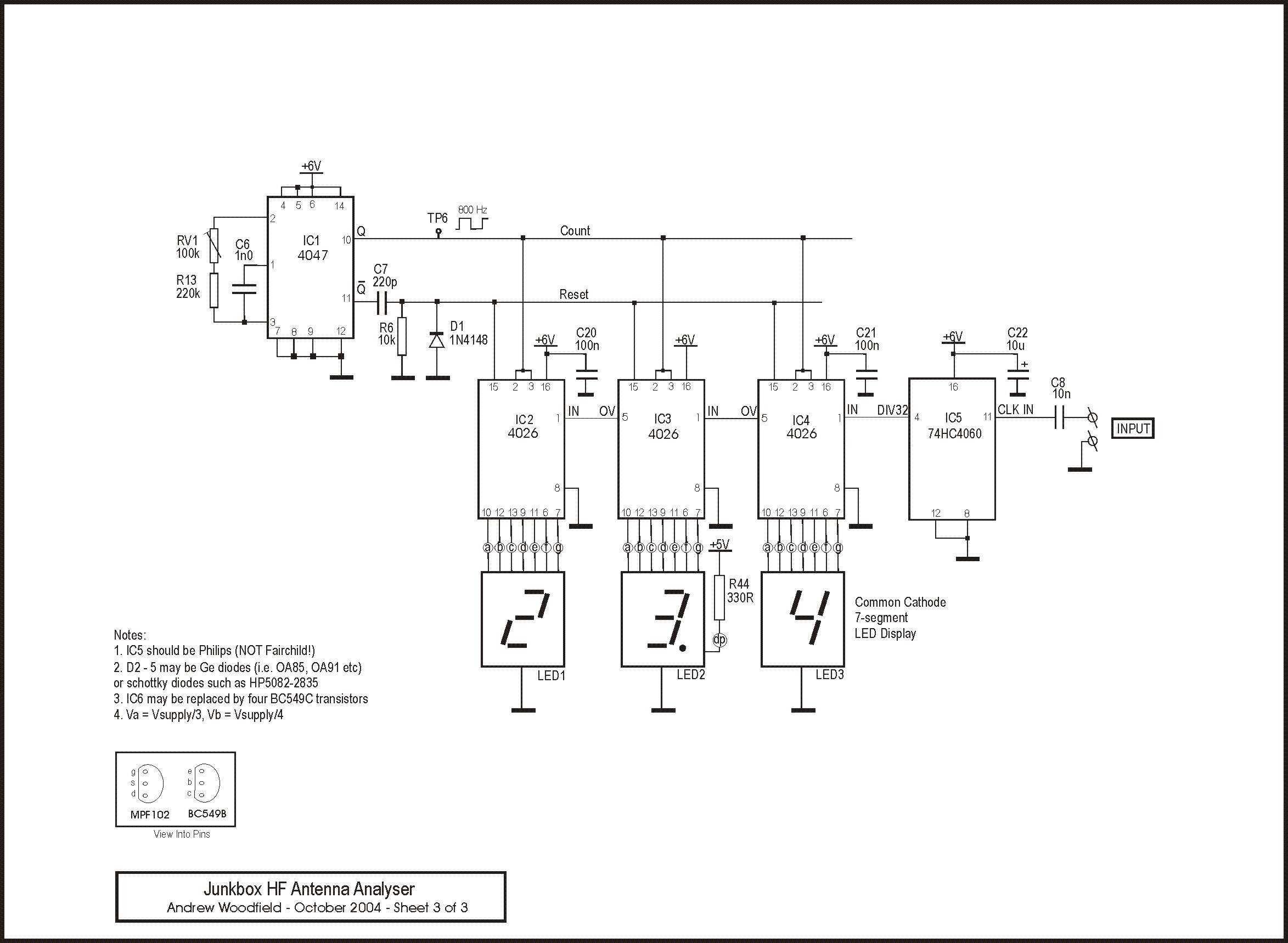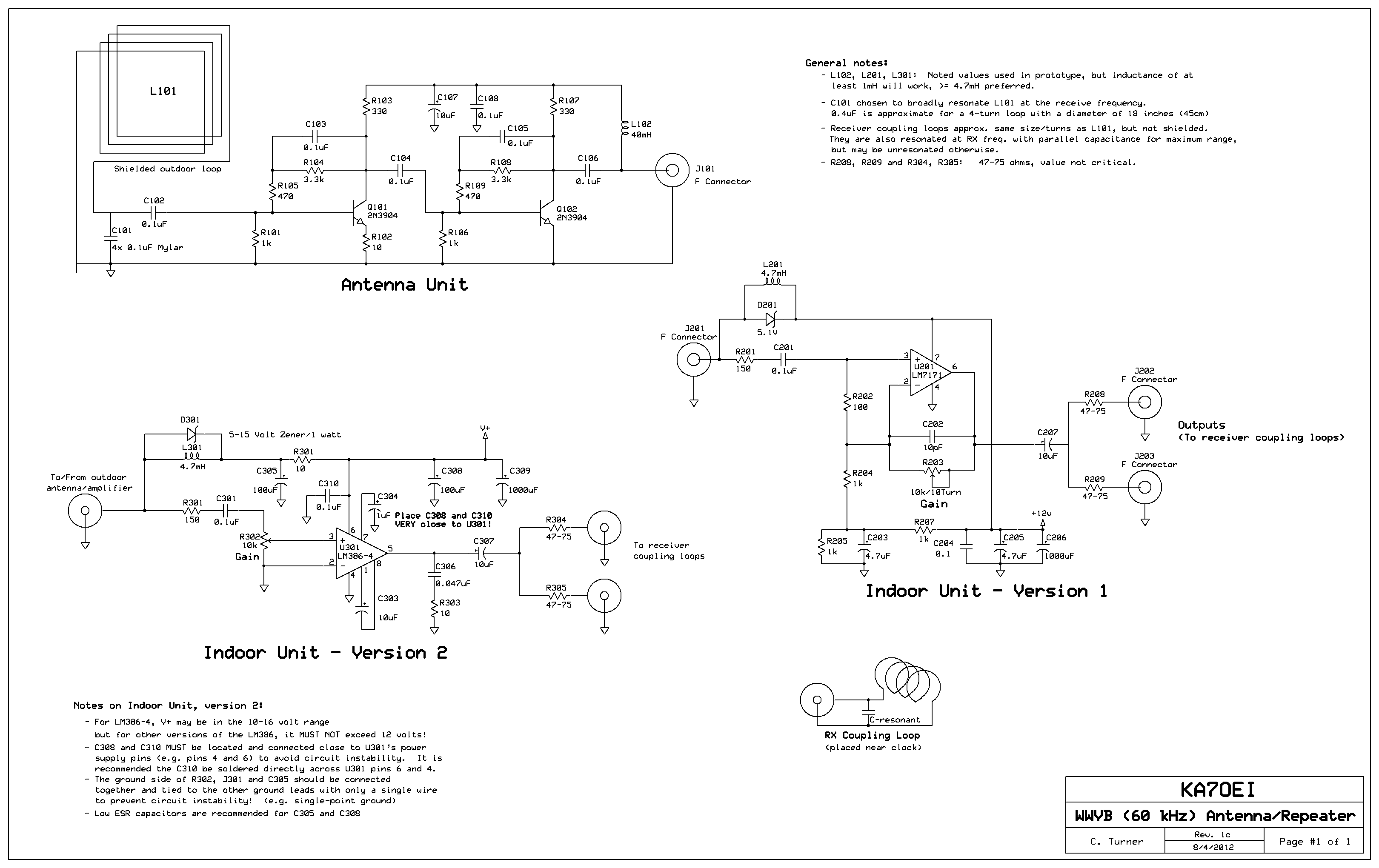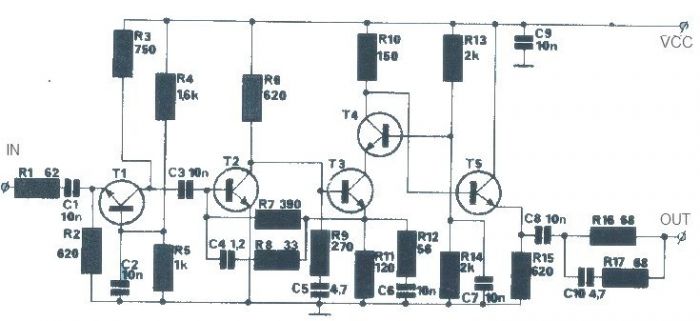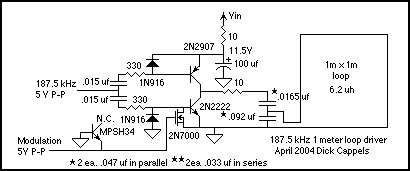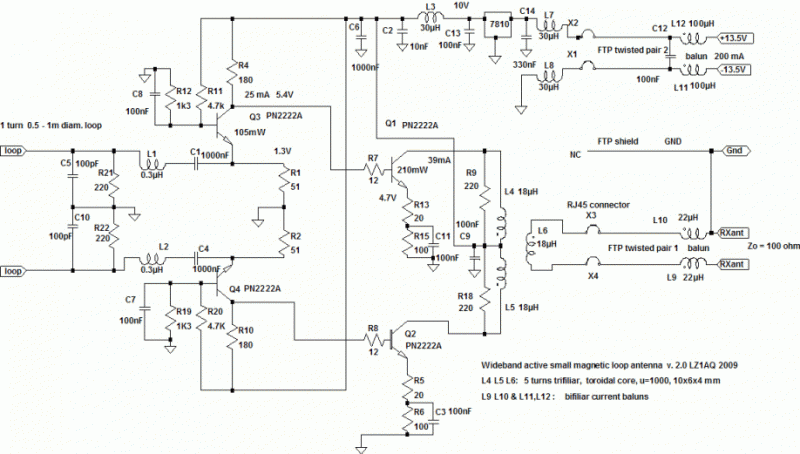
Active Antenna I
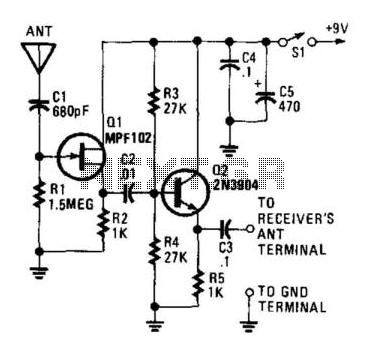
This circuit is designed to enable a short pull-up antenna to function similarly to a long wire antenna, without providing any voltage gain. The circuit enhances the receiver's performance only if the signal at the antenna is sufficiently strong from the outset. It connects a short pull-up antenna, which has a high output impedance, to the receiver's low input impedance using a two-transistor impedance-matching network. Transistor Q1 features a high input impedance and high-frequency characteristics, making it well-suited for the short antenna, while Q2's low output impedance closely matches the input of the receiver. This circuit operates effectively within the frequency range of 100 kHz to 30 MHz.
The circuit employs a two-transistor configuration to achieve impedance matching between the short pull-up antenna and the receiver. The first transistor, Q1, is configured as a common emitter amplifier, which provides high input impedance essential for effectively coupling the high output impedance of the antenna. This configuration minimizes signal loss and maximizes the transfer of the radio frequency (RF) signal from the antenna to the circuit.
Transistor Q2, configured as a common collector (emitter follower), presents a low output impedance to the receiver. This arrangement ensures that the output signal from Q2 is suitable for the low input impedance of the receiver, allowing for efficient signal transfer. The combination of Q1 and Q2 creates a broadband amplifier that operates effectively across the specified frequency range of 100 kHz to 30 MHz, making it suitable for various RF applications.
The circuit design also incorporates biasing resistors to stabilize the operating points of the transistors, ensuring consistent performance across varying environmental conditions. Capacitive coupling may be employed at the input and output stages to block any DC components from the antenna or receiver, allowing only the AC RF signals to pass through.
In summary, this circuit design effectively transforms the characteristics of a short pull-up antenna, enabling it to perform similarly to a long wire antenna while maintaining a high level of signal integrity across a broad frequency range, without introducing voltage gain. The careful selection and arrangement of components within the impedance-matching network are critical to achieving optimal performance in RF signal reception. This circuit is designed to make a short pull-up antenna perform like a long wire antenna, while offering no voltage gain. The circuit boosts the receiver"s performance only if the signal at the antenna is of sufficient level to begin with. This circuit takes a short pull-up antenna that has a high output impedance and couples it to the receiver"s low input impedance through a two-transistor impedance-matching network.
Transistor Ql"s high input impedance and high-frequency characteristics make it a good match for the short antenna, and Q2"s low output impedance is a close match for the receiver"s input. This circuit is usable over the range from 100 kHz to 30 MHz.
The circuit employs a two-transistor configuration to achieve impedance matching between the short pull-up antenna and the receiver. The first transistor, Q1, is configured as a common emitter amplifier, which provides high input impedance essential for effectively coupling the high output impedance of the antenna. This configuration minimizes signal loss and maximizes the transfer of the radio frequency (RF) signal from the antenna to the circuit.
Transistor Q2, configured as a common collector (emitter follower), presents a low output impedance to the receiver. This arrangement ensures that the output signal from Q2 is suitable for the low input impedance of the receiver, allowing for efficient signal transfer. The combination of Q1 and Q2 creates a broadband amplifier that operates effectively across the specified frequency range of 100 kHz to 30 MHz, making it suitable for various RF applications.
The circuit design also incorporates biasing resistors to stabilize the operating points of the transistors, ensuring consistent performance across varying environmental conditions. Capacitive coupling may be employed at the input and output stages to block any DC components from the antenna or receiver, allowing only the AC RF signals to pass through.
In summary, this circuit design effectively transforms the characteristics of a short pull-up antenna, enabling it to perform similarly to a long wire antenna while maintaining a high level of signal integrity across a broad frequency range, without introducing voltage gain. The careful selection and arrangement of components within the impedance-matching network are critical to achieving optimal performance in RF signal reception. This circuit is designed to make a short pull-up antenna perform like a long wire antenna, while offering no voltage gain. The circuit boosts the receiver"s performance only if the signal at the antenna is of sufficient level to begin with. This circuit takes a short pull-up antenna that has a high output impedance and couples it to the receiver"s low input impedance through a two-transistor impedance-matching network.
Transistor Ql"s high input impedance and high-frequency characteristics make it a good match for the short antenna, and Q2"s low output impedance is a close match for the receiver"s input. This circuit is usable over the range from 100 kHz to 30 MHz.
